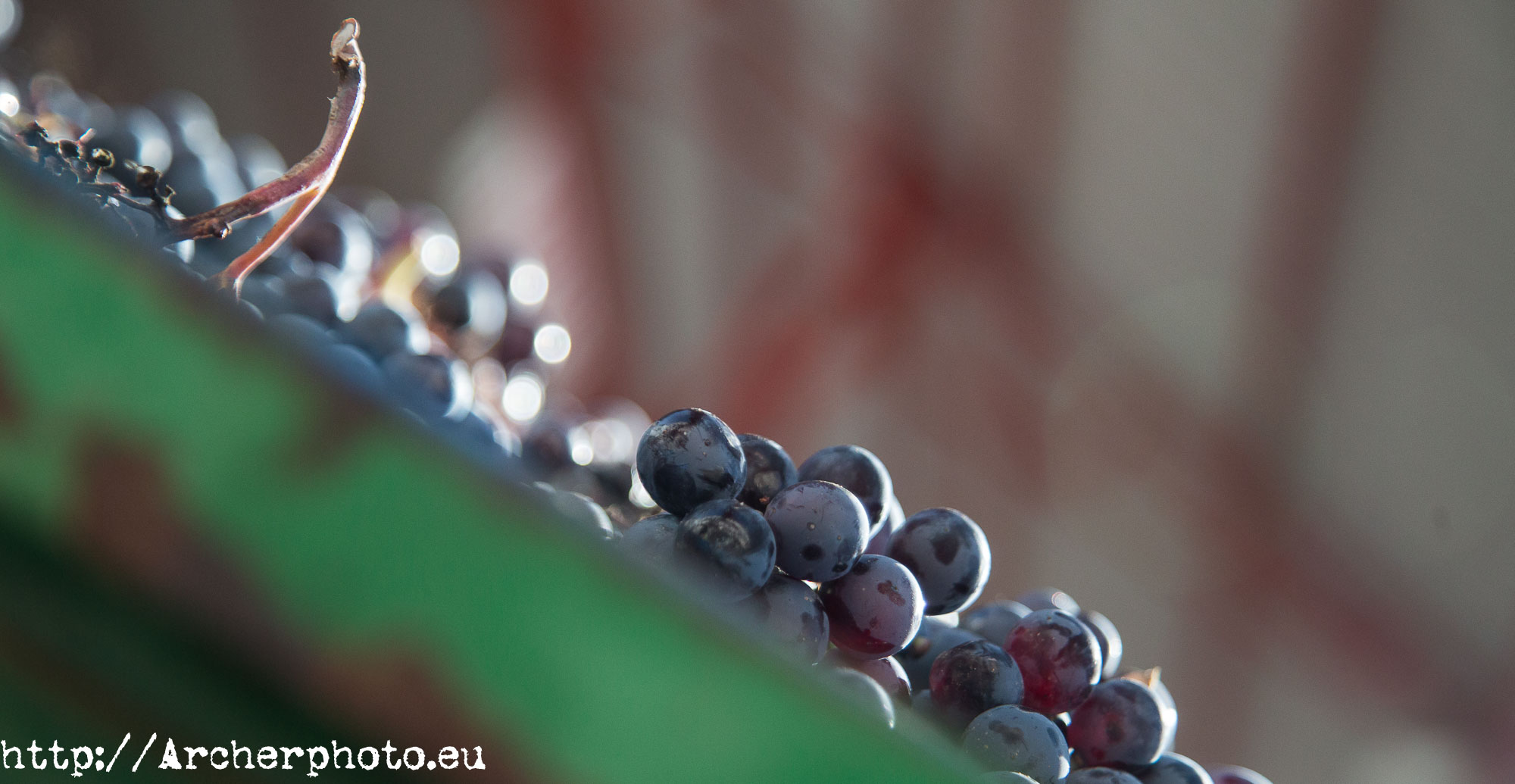I have always liked seeing pictures of people working. It is always interesting: watching how they did things in the past tells us many stories and gives us a perspective on where we are and where we come from. Without needing to be more transcendent, all this comes because, talking with my friend Arturo Blasco, we talked about the possibility of making a series of photos about a version of the winemaking process. Specifically, a process that is somewhat more traditional than the one usually done conventionally, because at Bodegas La Purísima, which is the company where he currently works, they would dedicate an effort to produce one of these wines and he would direct the operation. So I went with him, I spent a day in Yecla (Murcia) seeing how they carried out the whole process.
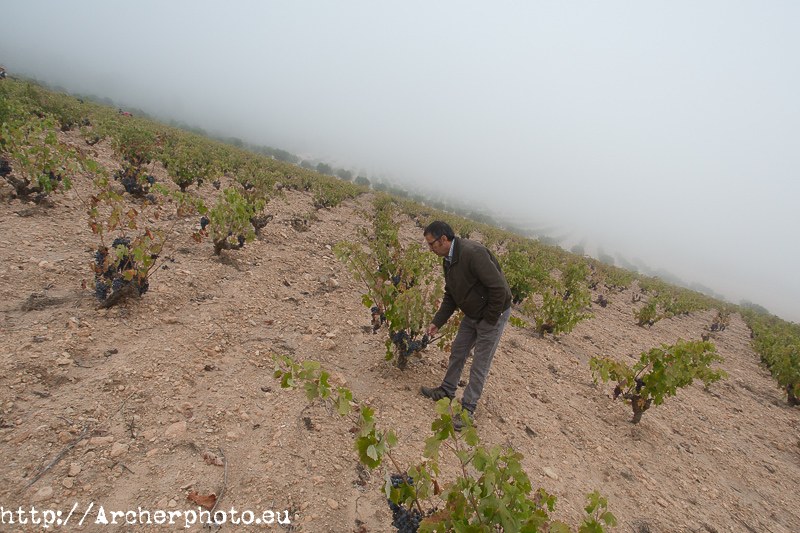
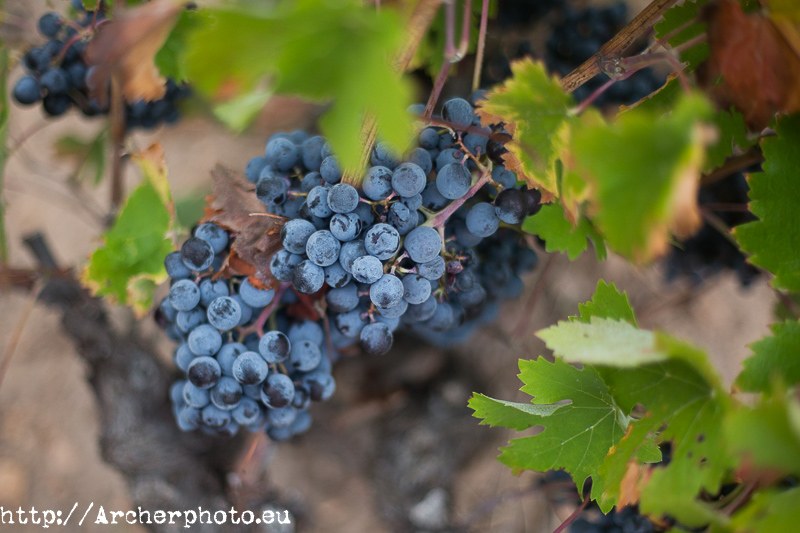
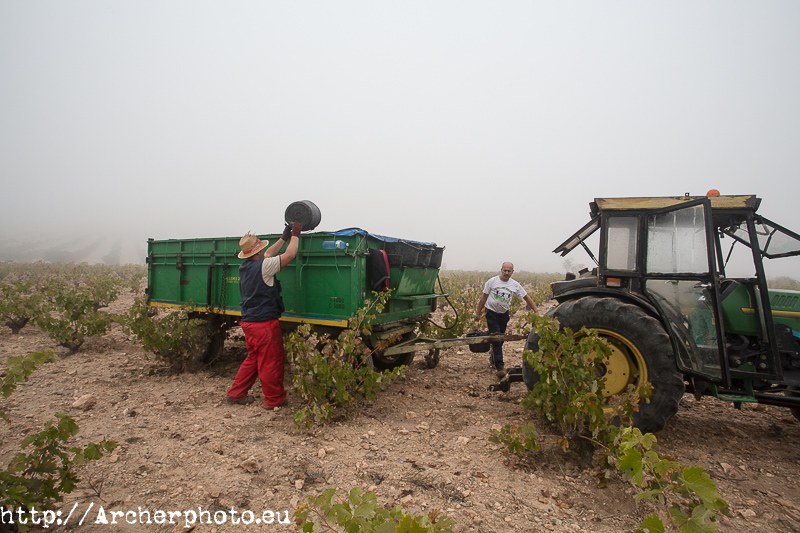
Making wine
Depending on the weather, sugar level in the grape and other factors, it is determined when the harvest is due. One of those factors that Arturo told me about is polyphenolic maturity. This maturity determines the quality of the grape. It is necessary to evaluate if the color is present and if the nugget when biting it is crunchy and without astringency. Arturo prefers to take the grape to the mouth and chew it. In this way, he says that it is like seeing a color photograph of what the wine will be.
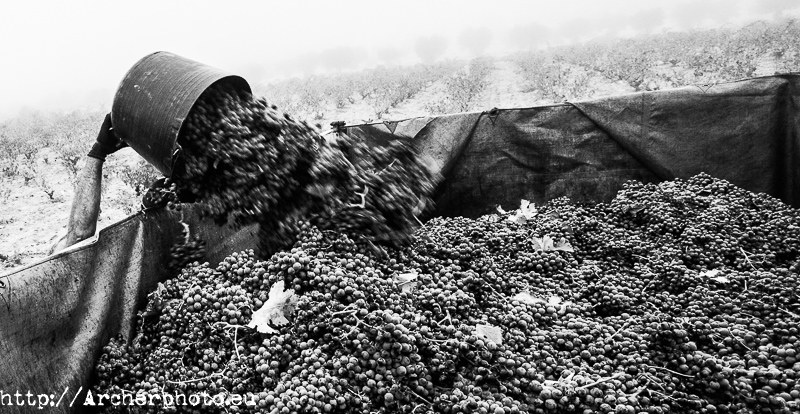
In this regard, if collected too far in advance the wine that is obtained will have a lower graduation. This, which for anyone would be only a detail, for the farmer has a key importance: the price is fixed in a significant part by the degrees of alcohol. In this way, when the grapes enter the cooperative, this variable is measured.
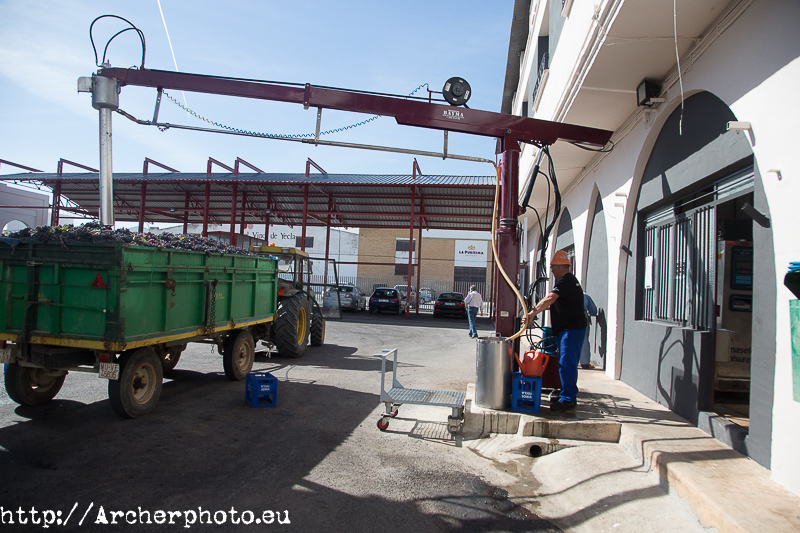
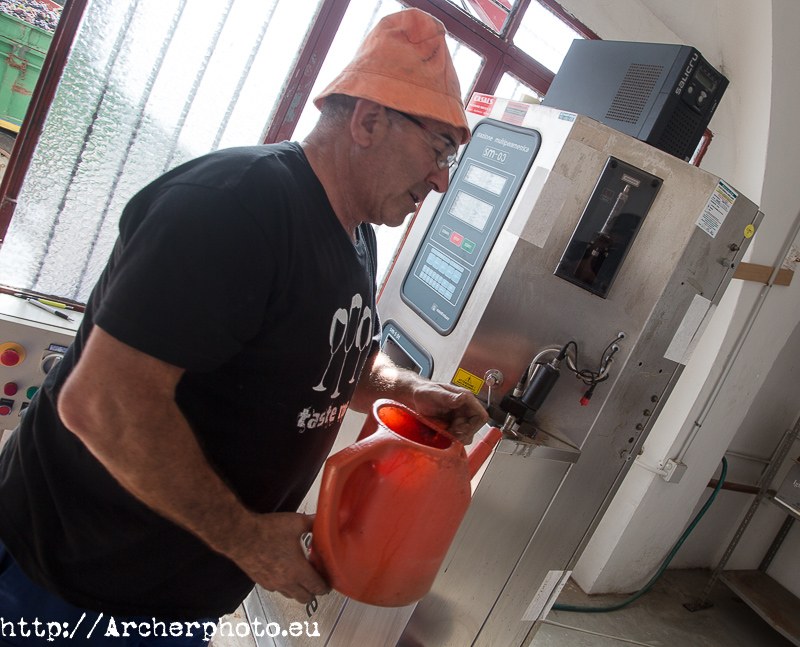
After transportation
Once the grape is in the cooperative begins the process of elaboration: in ancient times the grape was treading, but today mechanical processes are used. In the case of the grape ink, falling into the hopper goes to a crusher. This paste is pumped to its final destination so that the skin and nuggets get better contact with the must. In this way wine acquires color and body. Hence, in this case, it was sent to a couple of small vats, on which will work later.
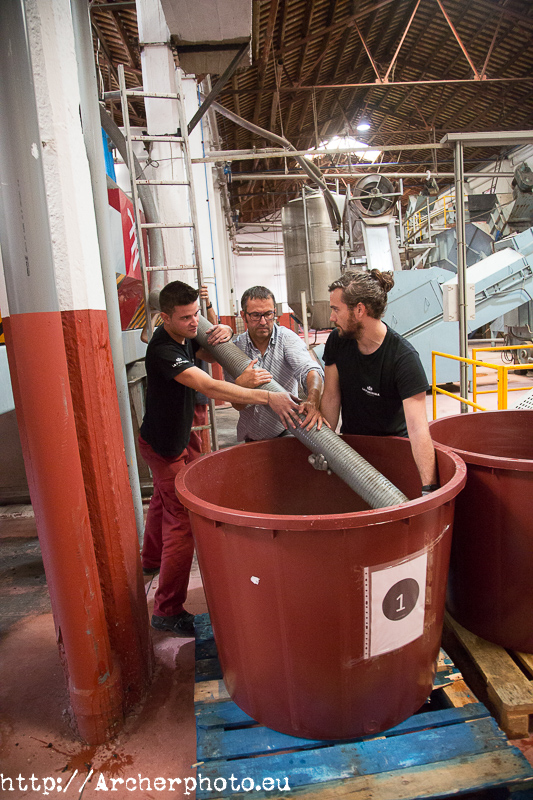
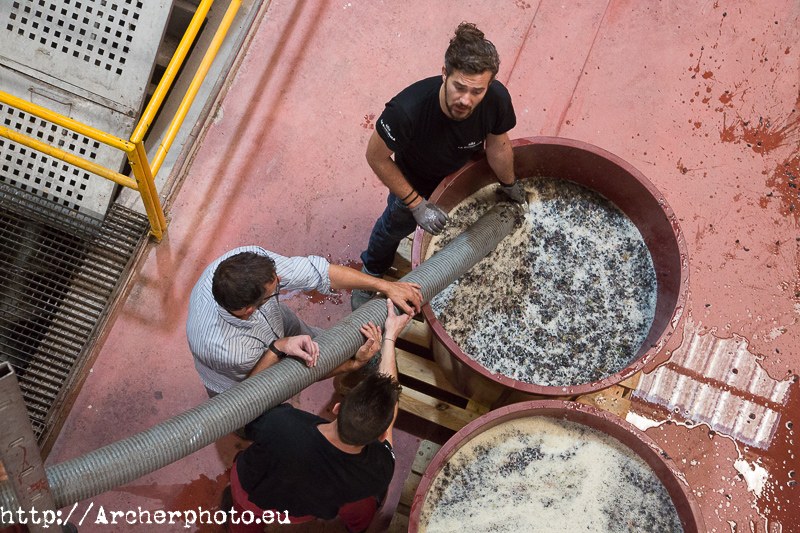
These vats, which I was told were small for the industrial volumes they usually work with, had a capacity of about 300 liters.
Dry ice
Once in the vats, Arturo wanted to lower the temperature to 5ºC. This way the fermentation does not start yet, and thus the mix is acquiring color and aromas. To lower the temperature in a plastic tank has been forced to use dry ice (carbon dioxide in solid form, which is about -60 ° C). When carbon dioxide comes into contact with the must, it goes from solid to gaseous state immediately. The high concentration of this gas, makes a mist appear that offers really impressive images. The process is quite spectacular, and although it seems to be doing something more typical of a Harry Potter movie, he’s only making sure there are no thermal differences between the surface and the inside.
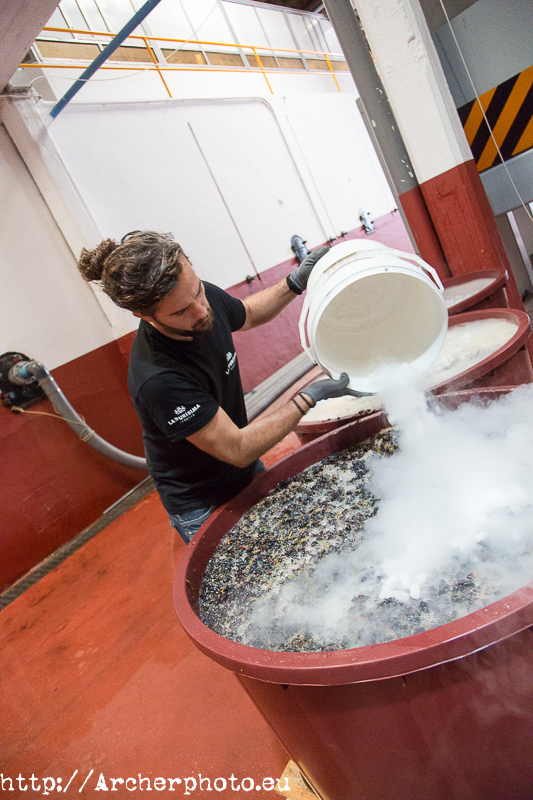
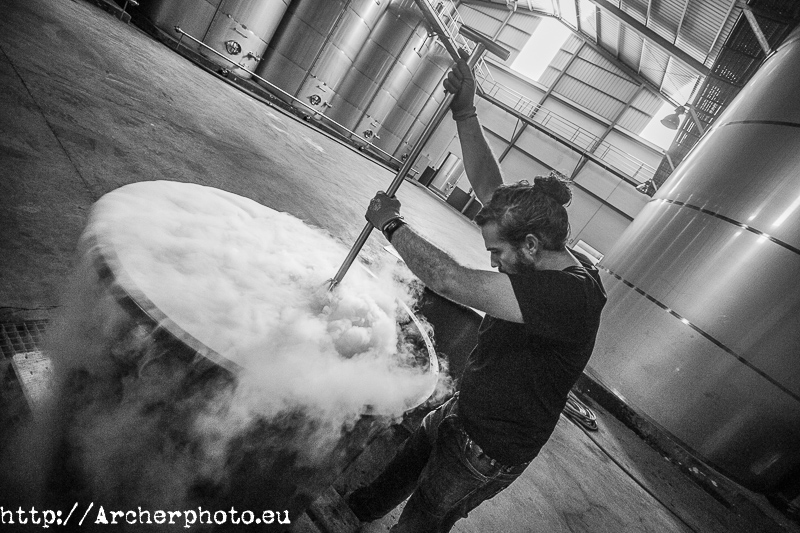
The must is left to macerate from that moment, and will begin to become wine. During the process most of the residue will be deposited in the bottom and ready to be filtered and bottled. Or to transfer it to the barrel.
Acknowledgements and contact
By the way, if you are interested in knowing more wine, Arturo writes in El Correo del Vino. It is imperative for me to thank him, not only for having taught me the process, but also because he has lent me a helping hand, proving that I did not commit any important wrongs by telling this. Here you can take a look at his articles related to oenology: http://www.elcorreodelvino.net/seccion/index/72. Also Felipe Martinez was explaining in detail each part of the elaboration.
I’m Sergi Albir. I am a professional photographer (you could say also a commercial photographer, if you like it better) and if you need portraits, videos or anything, you are in Valencia, Madrid, Edinburgh or Tierra del Fuego, and you want to contact me, an email to sergi@archerphoto.eu is the fastest way to find me. Well, and a Whatsapp to +34 644459753. Both things are worth it.

